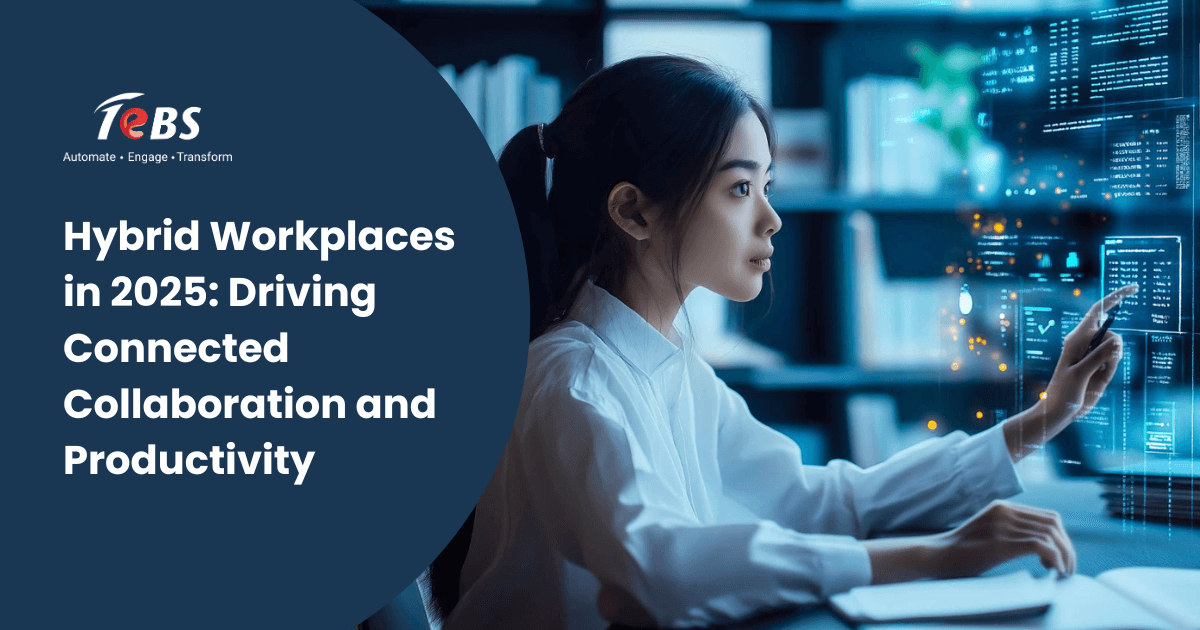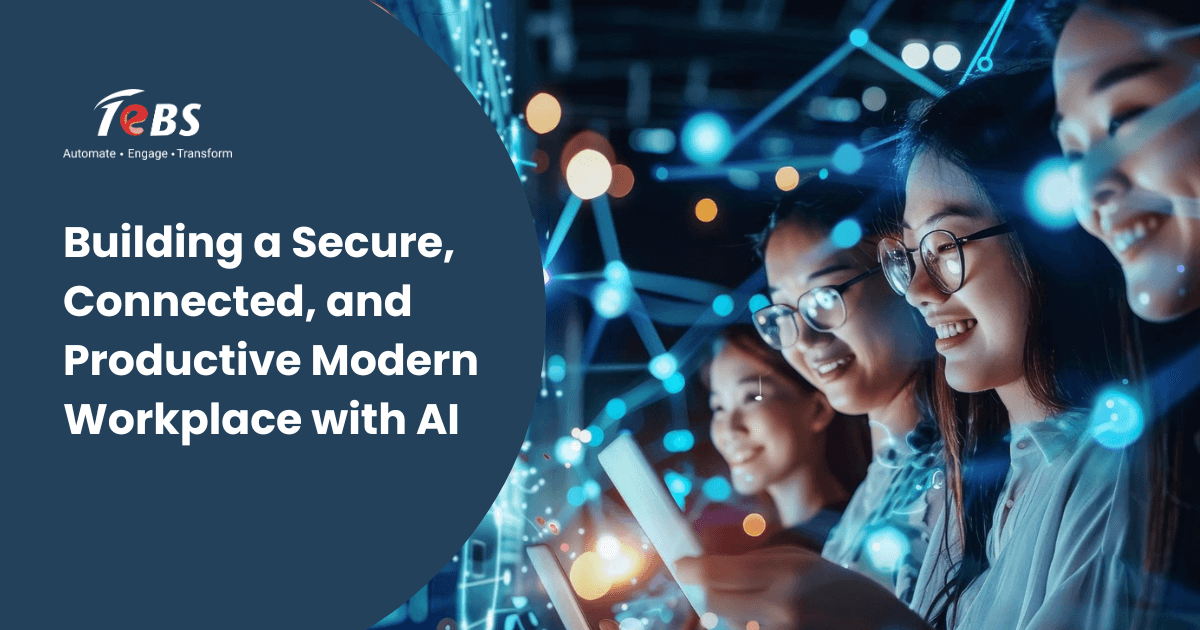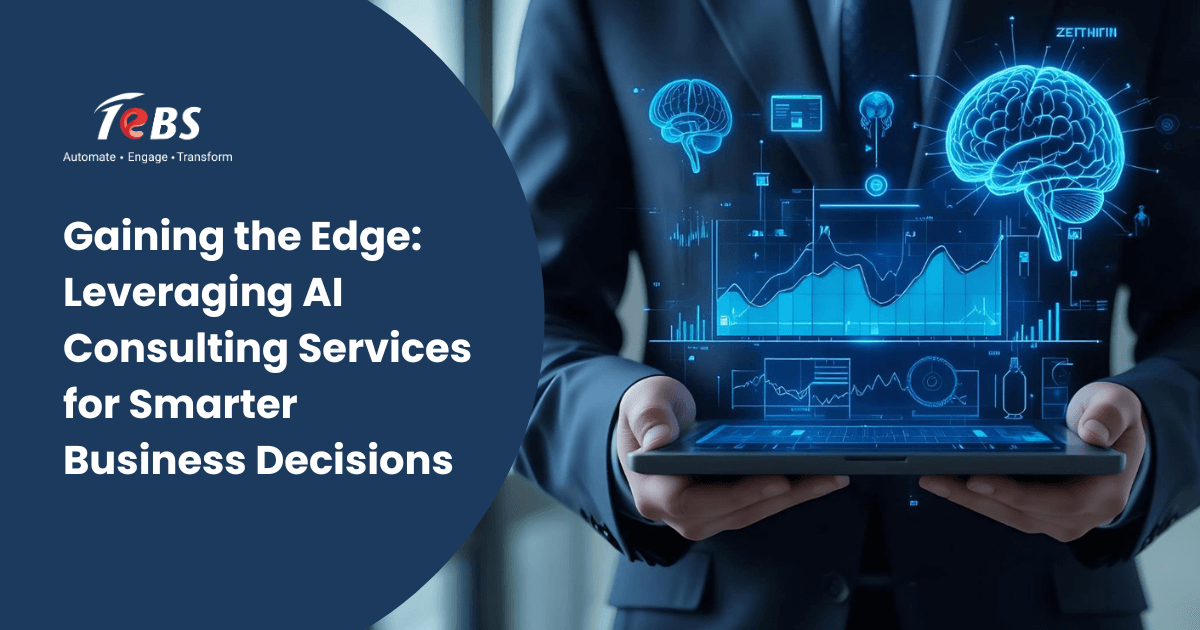Summary
In 2025, hybrid work is the default—and when you combine AI services with cloud platforms, teams stay secure, connected, and genuinely productive from anywhere. Microsoft 365/Teams and Azure provide the backbone for always-on collaboration, while Copilot and automation handle summaries, drafting, and routine workflows so people focus on outcomes. Clear communication channels, outcome-based goals, inclusive meetings, and a strong culture keep remote and on-site employees equally engaged. With solid data foundations and document management, organizations see higher task completion, shorter meetings, happier employees, faster delivery, and broader access to trusted information—backed by Zero Trust security and ready for what’s next: AI work assistants, immersive collaboration, and real-time workspace analytics powered by modern AI services.
Introduction: The Rise of Hybrid Workplaces Post-2020
The concept of the hybrid workplace has evolved from being an experimental model to becoming the new standard for organizations worldwide. Following the global shift in work dynamics post-2020, businesses have redefined how teams connect, collaborate, and deliver value. The hybrid model—where employees split their time between remote and on-site work—has proven to enhance flexibility, attract talent, and boost employee satisfaction.
As organizations enter 2025, hybrid workplaces are no longer just a response to necessity but a deliberate strategy to foster innovation and productivity. With advancements in cloud computing, artificial intelligence (AI), and digital collaboration tools, enterprises are building smarter, more connected ecosystems that empower teams to work efficiently from anywhere.
Challenges and Opportunities in Hybrid Work
The hybrid model presents both challenges and opportunities that define how organizations operate and compete. <section aria-label=”Challenges”>Challenges:
- Communication Gaps: Misaligned schedules and limited face-to-face interactions can create silos, reducing collaboration effectiveness.
- Employee Engagement: Keeping hybrid employees connected to company culture and engaged in collaborative tasks requires intentional planning.
- Data Security: With employees accessing systems from multiple locations, maintaining robust cybersecurity measures becomes critical.
- Performance Visibility: Managers may struggle to assess productivity and accountability across distributed teams.
Opportunities:
- Access to Global Talent: Organizations can now hire the best talent regardless of geography.
- Enhanced Work-Life Balance: Hybrid models support flexible schedules, improving employee well-being and retention.
- Optimized Real Estate Costs: Businesses can reduce physical office spaces while maintaining high operational efficiency.
- Sustainability Benefits: Reduced commuting and paperless workflows contribute to lower carbon footprints.
These opportunities demonstrate that when managed effectively, hybrid workplaces can significantly outperform traditional models in agility, innovation, and employee satisfaction.
AI and Cloud Technologies Enabling Seamless Collaboration
Artificial Intelligence and cloud technologies have become the backbone of modern hybrid workplaces. AI automates repetitive tasks, supports data-driven decisions, and enhances real-time collaboration, while the cloud provides scalable access to resources and tools from any location.AI-Driven Collaboration:
AI enables smarter meetings, automated scheduling, real-time translation, and intelligent insights that streamline team communication. Tools like Microsoft Copilot leverage natural language processing to summarize discussions, generate action items, and suggest next steps, allowing teams to stay aligned effortlessly. Power this with Generative AI services and Microsoft AI Power Platform governance.Cloud-Powered Flexibility:
Cloud platforms like Microsoft Azure and Microsoft 365 ensure that employees have secure access to files, applications, and data, whether they’re in the office or working remotely. This enables hybrid teams to collaborate on shared documents, manage projects, and maintain consistent workflows across time zones. Start with
Together, AI and cloud form a unified ecosystem that breaks geographical barriers, simplifies management, and keeps hybrid teams productive and connected.
Best Practices for Productivity in Hybrid Teams
Building an efficient hybrid workplace requires more than technology—it demands a cultural shift that prioritizes communication, flexibility, and accountability.1. Establish Clear Communication Channels
Define how and where teams communicate. Use collaborative platforms like Microsoft Teams or Slack for discussions, project updates, and file sharing to avoid information silos.2. Promote Outcome-Based Work
Focus on deliverables rather than hours spent. Define measurable goals and empower employees to manage their schedules while ensuring accountability.3. Create Equal Collaboration Opportunities
Ensure that remote employees have the same access to information and participation opportunities as on-site teams. Use virtual whiteboards and inclusive meeting practices to maintain engagement.4. Foster a Strong Hybrid Culture
Encourage virtual team-building activities and recognition programs to strengthen bonds and keep morale high across locations.
5. Leverage AI for Efficiency
Integrate AI assistants like Microsoft Copilot to handle repetitive documentation tasks, analyze insights, and automate workflows—freeing up employees for strategic, creative work.
By adopting these practices, organizations can ensure that hybrid teams remain aligned, motivated, and performance-driven.
Read our blog: Experience the Future of Customer Service with AI Agents.
Tools and Platforms for Hybrid Work
To sustain collaboration and productivity in hybrid environments, organizations rely on a combination of advanced tools that integrate AI, automation, and cloud computing.1. Microsoft Copilot
An AI-powered productivity tool that enhances daily workflows by summarizing meetings, drafting documents, generating reports, and providing intelligent suggestions within Microsoft 365 applications.
2. Microsoft Teams
Acts as a central hub for communication and collaboration, supporting video meetings, chat, file sharing, and integrated workflows—all securely hosted in the cloud.
3. Microsoft Azure
Provides scalable cloud infrastructure for hosting applications, managing data, and supporting remote access with high security and reliability.4. IntaSenz by TeBS
A digital automation and AI platform that enables organizations to streamline document management, automate repetitive tasks, and gain actionable insights to enhance decision-making.
5. Cloud Document Management Systems
These systems centralize data access, maintain version control, and ensure compliance—essential for hybrid organizations managing diverse workflows.
Together, these tools empower organizations to create a unified digital environment where employees collaborate effectively, no matter where they work.
Table: Productivity Metrics for Hybrid Work (h2)
| Metric | On-Site Team | Remote Team | Improvement with AI |
| Task Completion Rate | 85% | 80% | +10% with AI automation |
| Meeting Efficiency | Moderate (time-intensive) | High (shorter, focused) | +15% with AI meeting summaries |
| Employee Satisfaction | 78% | 82% | +12% through AI-assisted support |
| Collaboration Frequency | High (in-person) | Moderate (digital) | +20% using AI-driven insights |
| Project Delivery Timeliness | 88% | 84% | +10% through predictive analytics |
| Data Accessibility | Limited to office network | Fully digital | +25% with cloud integration |
This comparison shows that hybrid teams, when supported by AI and cloud technologies, achieve measurable gains in efficiency, satisfaction, and overall productivity.
For modern data practices and insights, refer to Gartner’s “10 Strategic Data and Analytics Predictions Through 2028” — Read more here.
Future Trends in Hybrid Work Collaboration
As organizations continue refining hybrid work strategies, emerging technologies and evolving work cultures will redefine how collaboration happens.1. AI-Powered Personal Work Assistants
2. Immersive Virtual Collaboration Spaces
Virtual reality (VR) and augmented reality (AR) are enabling more natural interactions, allowing hybrid teams to brainstorm, train, and collaborate in immersive 3D environments.
3. Intelligent Workspace Analytics
4. Sustainable Digital Workplaces
Organizations are prioritizing sustainability through digital tools that reduce paper use, optimize energy consumption, and promote environmentally responsible operations.
5. Unified Security and Compliance Frameworks
As hybrid environments expand, zero-trust security models and AI-powered threat detection will be essential to protect data across distributed systems.
These trends point toward a future where hybrid workplaces are intelligent, adaptive, and deeply integrated with technology to support both organizational goals and employee well-being.
Read our case study: A global logistics enterprise increases process runtime by 128% using RPA
Conclusion & Call-to-Action
The hybrid workplace model has redefined how organizations collaborate, connect, and create value. Enabled by AI and cloud technologies, it promotes flexibility, productivity, and inclusion—empowering employees to deliver their best work regardless of location. Businesses that embrace intelligent collaboration tools, invest in digital infrastructure, and prioritize people-first practices will continue to thrive in the hybrid era.
Whether you’re looking to modernize your workplace, enhance digital connectivity, or boost team productivity, TeBS can help you design and implement AI-driven hybrid work solutions tailored to your needs.
Connect with our experts at [email protected] to transform your workplace into a connected, collaborative, and future-ready environment.
FAQs
1. What is a hybrid workplace?
A hybrid workplace combines remote and on-site work, allowing employees to split their time between working from the office and other locations. It offers flexibility while maintaining collaboration and productivity.
2. How does AI help hybrid teams collaborate effectively?
AI enhances hybrid collaboration by automating tasks, summarizing meetings, suggesting next steps, and providing real-time insights. Tools like Microsoft Copilot improve communication, reduce workload, and keep teams aligned.
3. What are common challenges in hybrid workplaces?
Common challenges include communication gaps, maintaining employee engagement, ensuring data security, and tracking performance across distributed teams. Effective tools and clear processes help overcome these issues.
4. Which tools improve productivity in hybrid work?
Key tools include Microsoft Copilot, Microsoft Teams, Azure Cloud, IntaSenz by TeBS, and digital document management platforms. These tools support seamless communication, secure data access, and workflow automation.
5. How can organizations measure hybrid workplace success?
Organizations can track metrics such as task completion rates, employee satisfaction, meeting efficiency, and project delivery timeliness. AI and analytics tools provide insights to continuously improve hybrid work performance.





